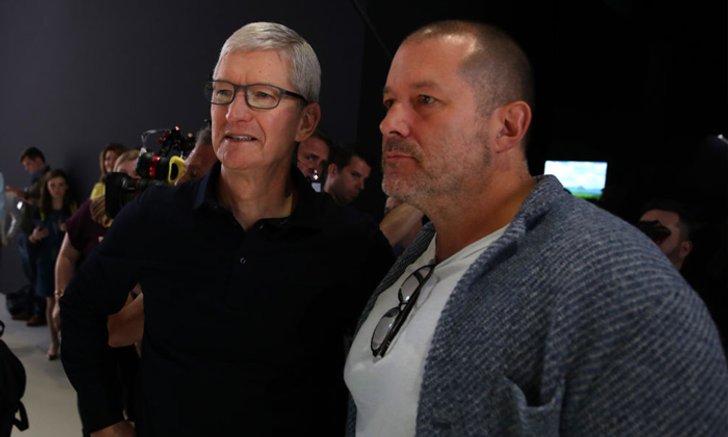
Apple founder Steve Jobs said that the company aimed to "reinvent the phone" with the device, which was a wide-screen iPod that had internet-browsing capabilities and a touch-screen user interface.ĭescribed at the time by Dezeen editor-in-chief Marcus Fairs as one of the "outstanding designs of the 21st century so far", the iPhone was nominated as the Design Museum's Design of the Year in 2008, but did not win. With an appearance similar to a desk lamp, all of the computer's hardware was contained within a semi-spherical base, while the screen was attached via an arm that allowed it to be rotated to suit the user.Īpple's first foray into the mobile-phone market would, like the iPod before it, revolutionise the entire industry.
Jony ive notch update#
The iMac G4 was Ive's first major design update of the iMac since the original in 1998. It would come to dominate the music-player market, until the iPhone destroyed the need for dedicated players. The 5GB MP3 player, which was designed to be a compromise between capacity and size, had a simple design with just five buttons and a scroll wheel. The iBook G3 was also one of the first mainstream computers to have wireless capabilities built in.Īpple's first move into digital music-players, the iPod would revolutionise the whole market. Like the iMac, the clam-shell laptop used USB instead of legacy interfaces and was without a floppy-disc drive. I don’t want to design for specific devices, I design for the web.Following the release of the iMac, Ive introduced the distinctive transparent shells to other products – one of the first being the iBook G3. Things are different because if I’d want to design for HUD’s on windshields or glasses, I’d apply for a company that does proprietary sofware that runs on proprietary hardware. While writing these lines down, I read the above on Twitter. Removing the White Bars in Safari on iPhone Xĭon’t like designing for the iPhone X notch? You probably wouldn’t enjoy designing for HUDs on windshields, glasses, curved displays etc.I guess Apple should have done more to make sure that websites look good on iPhone X instead of throwing new burdens on us. Starting with a baseline of usable functionality, then increasing the richness of the user experience step by step by testing for support for enhancements before applying them. Providing an alternative version of your functionality or making the user aware of shortcomings of a product as a safety measure to ensure that the product is usable. icon īut designing for retina was a proper progressive enhancement while designing websites for iPhone X looks a lot alike graceful degradation. Later on, better SVG support was implemented for the major browsers and things got better.

Mostly because everyone knew the other providers will strive to deliver this feature too. In the end, we got used to having something like the below lines in our stylesheets and everyone was fine with it.
Jony ive notch how to#
That was awesome, we all wanted to know how to make our website image assets look better. I remember when the iPhone 4 introduced Apple’s high-resolution “Retina Display”.

… selectively apply padding to elements that contain important content, in order to ensure that they are not obscured by the shape of the screen. But the below excerpt from latest WebKit post on “Designing websites for iPhone X” isn’t.

Upon the iPhone X release, I did enjoy the jokes and memes on Jony Ive and his notch haircut, or how to implement a scrolling list that shifts to avoid the notch. Designing websites for iPhone X, they say


 0 kommentar(er)
0 kommentar(er)
